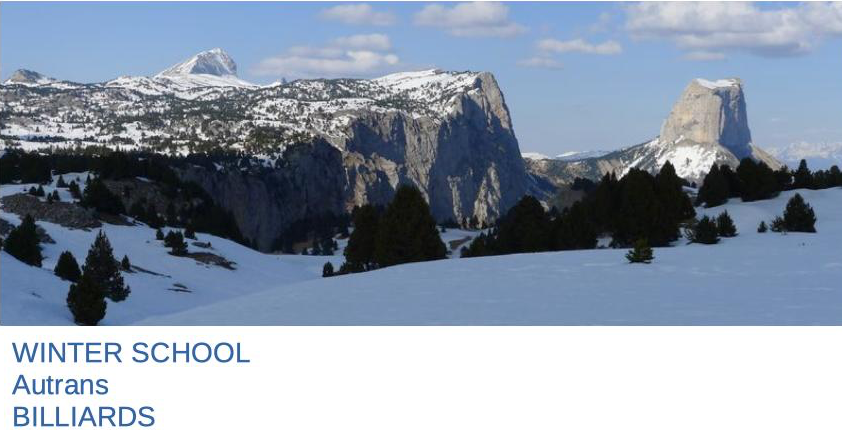Pierre Arnoux (Marseille) Les diplotores, une famille de plongements isométriques et linéaires par morceaux des tores plats dans $\R^3$.
Julien Boulanger (Grenoble) Connection points on translation surfaces
Abstract: After a general introduction on translation surfaces and Veech groups, I will introduce the notion of connection point of a translation surface, which are used by P.Hubert and T.Schmidt to construct translation surfaces with infinitely genrated Veech group. We will then focus on the central points of the double heptagon and show that they are not connection points using continued fractions on hecke triangle groups, and will also relate this "number theoretic" approach with another geometric approach due to D.Davis and S.Lelièvre.
Jérôme Carrand (Sorbonne Université) Existence of MME for the Sinai billiard flow
Abstract: Using Abramov's formula, we relate the MME of the Sinai
billiard flow to the equilibrium states under a specific potential of
the collision map. We give two conditions such that any H\"older
potential satisfying them admits a unique equilibrium states. Existence
of equilibrium measures is proved by constructing these measures from
the maximal eigenvectors of an appropriate transfer operator acting on
an anisotropic Banach space. I will present the main ideas in the
construction of these measures, and some of their properties.
Magali Jay (Marseille) Interval Exchange Transformations and Katok's question
Abstract: Interval exchange transformations (IETs) are individually well understood, but there are lots of open questions about the structure of their group. I will talk about Katok's question (wether there is a free subgroup of rank 2), which is open. I will explain a way to find relations between a fixed IET and another one, lying in an open dense subset.
Maxence Phalempin (Brest) Asymptotic behavior of self-intersection of trajectories from the flow of a Z-periodic Lorentz gaz
H.A Lorentz introduced in 1905 a model describing the behavior a constant speed moving point particle elastically colliding round obstacles, the Lorentz gas model. In this talk I present the Z-periodic Lorentz gaz (Lorentz gaz on a tube) in finite horizon, on which I study the number of self-intersections of the trajectory generated by a particle. Since such system seen through the Lebesgue measure is recurrent and ergodic, the number of self-intersections increases along with time and evaluating this growth leads us to some limit theorem. Such result is proven through describing the problem within a Z-extension over a Sinai Billard. On such hyperbolic billiard, decorrelation results allows us to approximate the trajectories through the product of two parameters, one in local scale describing their states within some "cells" and a global one seen as a one dimensional random walk on the Z-extension.


